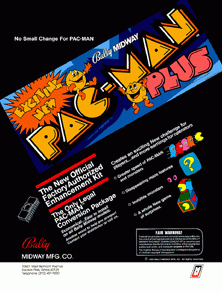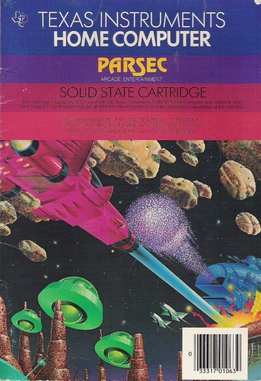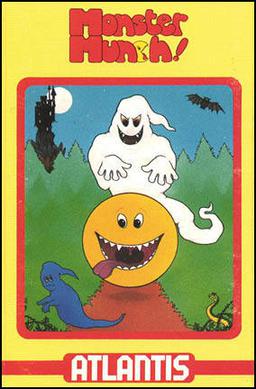
Pac-Man, originally called Puck Man in Japan, is a 1980 maze action video game developed and released by Namco for arcades. In North America, the game was released by Midway Manufacturing as part of its licensing agreement with Namco America. The player controls Pac-Man, who must eat all the dots inside an enclosed maze while avoiding four colored ghosts. Eating large flashing dots called "Power Pellets" causes the ghosts to temporarily turn blue, allowing Pac-Man to eat them for bonus points.

Ms. Pac-Man is a 1982 maze arcade video game developed by General Computer Corporation and published by Midway. It is the first sequel to Pac-Man (1980) and the first entry in the series to not be made by Namco. Controlling the title character, Pac-Man's wife, the player is tasked with eating all of the pellets in an enclosed maze while avoiding four colored ghosts. Eating the larger "power pellets" lets the player eat the ghosts, who turn blue and flee.

Mouse Trap is a maze video game developed by Exidy and released in arcades in 1981. It is similar to Pac-Man, with the main character replaced by a mouse, the dots with cheese, the ghosts with cats, and the energizers with bones. After collecting a bone, pressing a button turns the mouse into a dog for a brief period of time. Color-coded doors in the maze can be toggled by pressing a button of the same color. A hawk periodically flies across the maze, unrestricted by walls.

Pac-Man Plus is an arcade game that was released by Bally Midway on March 13, 1982, and it is the third title in the Pac-Man series of games.

Jr. Pac-Man is an arcade video game developed by General Computer Corporation and released by Bally Midway on August 13, 1983. It has the same gameplay as prior entries in the series, but the maze in Jr. Pac-Man scrolls horizontally and has no escape tunnels. The bonus item which moves around the maze changes dots into a form which slows Jr. Pac-Man as they are being eaten.

K.C. Munchkin!, released in Europe as Munchkin, is a maze game for the Magnavox Odyssey 2. Its North American title is an inside reference to then president of Philips Consumer Electronics, Kenneth C. Menkin.

Super Pac-Man is a 1982 maze chase arcade game developed and published by Namco. It was distributed in North America by Midway. Super Pac-Man is Namco's take on a sequel to the original Pac-Man; Midway had previously released Ms. Pac-Man, which Namco had little involvement with. Toru Iwatani returns as designer.

Namco Classic Collection Vol. 2 is a 1996 compilation arcade game developed and published by Namco. It is a collection of four of Namco's popular games: Pac-Man (1980), Rally-X (1980), New Rally-X (1981) and Dig Dug (1982). Alongside the original games, three new "Arrangement" games based on each game are included.

Parsec is a horizontally scrolling shooter written by Jim Dramis and Paul Urbanus for the TI-99/4A and published by Texas Instruments in 1982. Dramis also programmed Car Wars and Munch Man for the TI-99/4A.

Pac-Man: Adventures in Time is a 2000 maze video game in the Pac-Man series developed by Creative Asylum and Mind's Eye Productions, and published by Hasbro Interactive, in collaboration with Namco. The game follows a formula similar to the original arcade game, while expanding on it with new features. In the game, Pac-Man travels through various time periods using Professor Pac-Man's time machine to recover pieces of an ancient artifact.

Pac-Man is a 1982 maze video game developed and published by Atari, Inc. under official license by Namco, and an adaptation of the 1980 hit arcade game of the same name. The player controls the title character, who attempts to consume all of the wafers while avoiding four ghosts that pursue him. Eating flashing wafers at the corners of the screen will cause the ghosts to turn temporarily blue and flee, allowing Pac-Man to eat them for bonus points.

Monster Munch is a clone of Pac-Man programmed by Mark Trotter for the Commodore 64. It was published by Atlantis Software in 1983.

Munchman is a tabletop electronic game that was released under licence in 1981 in the UK by Grandstand. It is a rebadged version of the Tomy game known as Pac Man in the United States and Puck Man in Japan. The games are all based on Namco's Pac-Man arcade game and use a VFD screen.

Mini-MunchMan is a handheld electronic game that was released in 1981 in the UK by the manufacturer Grandstand. The game is a rebadged version of Epoch-Man from Epoch.

World's Biggest Pac-Man is a browser game created by Australian website designer Soap Creative along with Microsoft and Namco Bandai Games. It is a Pac-Man game which differed from the original by having multiple players play together in a series of user-created, customizable and interlocking mazes. The game was announced at the Microsoft MIX Developer Conference on 13 April 2011.

Pac-Man 256 is an endless runner video game developed by Hipster Whale and 3 Sprockets and published by Bandai Namco Entertainment. The game is part of the Pac-Man series and is inspired by the original Pac-Man game's infamous Level 256 glitch. The game was originally released as a free-to-play title for iOS and Android on August 20, 2015. A port of the game for PlayStation 4, Xbox One, and PC by Bandai Namco Studios Vancouver, featuring additional features, was released on June 21, 2016.

Scarfman is a clone of Pac-Man written by Philip A. Oliver for the TRS-80 computer and published by The Cornsoft Group in 1981. A version for the TRS-80 Color Computer followed in 1982 as Color Scarfman, which uses 64x64 low resolution graphics.

Pac-Man 99 was a maze video game with battle royale elements developed by Arika and published by Bandai Namco Entertainment for the Nintendo Switch. It was released through the Nintendo Switch Online service on April 7, 2021.


















